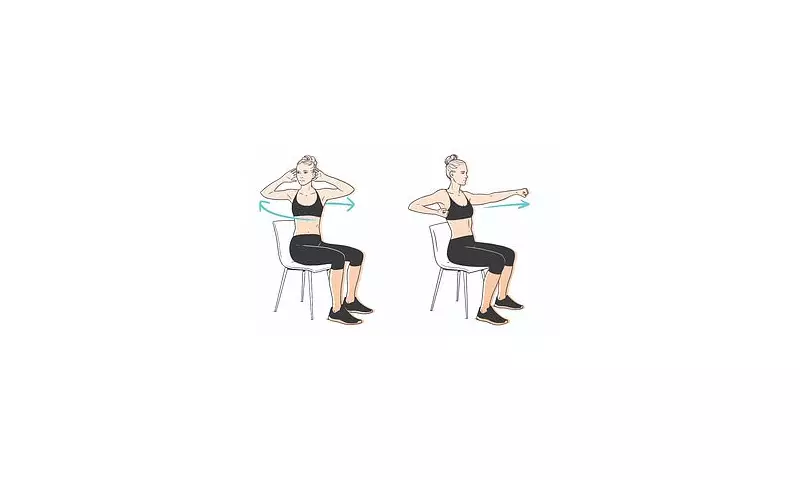
Unlocking the Secret to Lifelong Fitness
Many people struggle to establish a consistent fitness routine, often because they're unsure which exercises work best for their body and age group. While ageing is inevitable, becoming weaker and more fragile certainly isn't. Contrary to popular belief, older adults don't necessarily need to reduce their exercise intensity dramatically - regular movement continues delivering significant health benefits throughout life.
Research consistently demonstrates that exercise not only helps manage weight but also reduces the risk of heart disease and other conditions, including dementia. According to Professor June Andrews, a renowned dementia care specialist, squats and weight-bearing exercises are particularly crucial for maintaining bone density and muscle strength.
Why Strength Matters as We Age
Professor Andrews emphasises that for older individuals, especially those with cognitive impairment, maintaining strength becomes vital for preventing falls. "If you stumble, your reaction times might be slow, and you're more likely to fall," she explains. "Being strong and knowing how to get off the floor without help is a useful thing to start practicing early so it offers some protection."
Dr Tim Beanland, head of knowledge and learning at the Alzheimer's Society, agrees that any enjoyable exercise can make a substantial difference. "If you are already living with dementia, remaining active and keeping on with the sports or activities you love can make a big difference and help reduce feelings of low mood or isolation," he adds.
While exercise isn't recommended for those feeling unwell, numerous gentler or seated options can provide activity and enjoyment. Dr Beanland also highlights that cognitive exercises like crosswords, puzzles and quizzes effectively keep brains active during long winter evenings.
Five Essential Exercises Recommended by Specialists
Three of the UK's leading exercise and cognitive health specialists have revealed five simple everyday exercises to complement activities like swimming or walking during midlife.
Chair Stand
How to do it: Sit at the edge of a sturdy chair with feet flat on the floor, hip-width apart. Lean slightly forward and push through your heels to stand up straight. Slowly lower yourself back into the chair without dropping down suddenly.
Benefits: Dr Robin Chatterjee, a consultant in musculoskeletal, sports and exercise medicine at Chelsea Outpatient Centre, describes this movement as "excellent for building leg strength and improving balance." The exercise enhances functional strength, making daily activities like rising from chairs or climbing stairs easier. Dr Claire Agathou, a GP and co-founder of The A-Z General Practice in London, adds that this exercise represents a "strong marker of long-term independence" by building confidence and reducing fall risks.
Seated Boxing Air Punching
How to do it: Sit upright in a supportive chair with feet firmly planted. Lightly punch the air while alternating arms. Even 20 to 40 seconds can effectively raise your heart rate comfortably.
Benefits: Dr Oliver Guttmann, a consultant cardiologist at The Wellington Hospital in London, explains this movement keeps the upper body active and encourages deeper breathing, helping the heart pump blood more efficiently. "It can also improve circulation and muscle tone in people who spend long periods sitting," he notes. Regular practice may support cardiovascular endurance and assist with tasks requiring upper-body strength.
Standing Calf Raises
How to do it: Stand behind a chair, holding onto the back for support. With feet shoulder-width apart, slowly rise onto your toes before lowering back down.
Benefits: This exercise improves balance, ankle stability, mobility, and strength. Dr Chatterjee emphasises that strong calves support walking and stair climbing while helping prevent falls. The movement enhances lower limb blood circulation, reducing sprains and potentially decreasing tendonitis risk.
Wall Push-Ups
How to do it: Stand about an arm's length from a wall. Place hands on the wall at shoulder height and width apart. Lean toward the wall while bending elbows, then push back to the starting position.
Benefits: Dr Chatterjee describes wall push-ups as a gentle method to strengthen the chest, shoulders, and arms. For increased intensity, keep elbows tucked close to your body. As strength improves, adding repetitions or positioning yourself further from the wall builds resistance. "This exercise helps improve muscle tone and endurance without the strain associated with traditional push-ups, making it safer for older adults," he confirms.
Seated Spinal Rotation
How to do it: Sit upright on a chair with hands on thighs or, if possible, behind your ears. Gently rotate from side to side.
Benefits: After prolonged sitting, this stretch relieves tension and stiffness in the middle and lower back while improving mobility for daily activities. Dr Agathou notes it "encourages mindful breathing and reduces stress - a contributor to cognitive decline." She emphasises that "small daily movements accumulate into major long-term benefits. Importantly, exercises do not need to be strenuous, they just need to be safe, comfortable and consistent."
Building Sustainable Fitness Habits
Experts recommend considering group fitness classes alongside individual exercises, as they foster community connections and make workouts more enjoyable.
Dr Agathou suggests that people often underestimate aerobic exercises like swimming, cycling, and using elliptical trainers, particularly beneficial for those in their sixties. "For anyone unsure where to start, your GP can help by signposting to a social prescriber or referring to a physiotherapist if needed," she advises.
Local gyms with trainers experienced in working with older adults offer safe guidance, while organisations like Age UK can identify tailored community classes.
Dr Guttman emphasises that "little and often" represents an excellent rule for heart health after sixty. "What matters most is finding movement that feels safe, achievable and enjoyable because that is what people are most likely to continue," he concludes.





